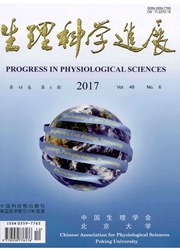

 中文摘要:
中文摘要:
近期的研究发现,哺乳动物细胞的正常DNA中普遍存在一类新的碱基组成成分,即5-羟甲基胞嘧啶(5-hydroxymethyl cytosine,5-hmC).这种刚刚开始被人们深入认识的碱基修饰形式,被称作是基因组的第六碱基.本文主要介绍关于5-hmC的形成机制、组织特异性分布、在细胞分化和表达调控等生理过程中的作用,以及作为表观遗传标志物与肿瘤等疾病的关系方面的研究进展.此外,我们对现阶段关于甲基化及羟甲基胞嘧啶的检测方法在基因组学研究中的进展进行了归纳和总结.
 英文摘要:
英文摘要:
Recently, 5-hydroxymethyl cytosine (5-hmC) has been discovered as a naturally existed com- ponent of normal mammalian genomic DNAs, and it is generally accepted as the sixth base in the genome. This review will introduce the recent advances in the researches on 5-hmC of its formation, tissue- specific distribution, the roles in cell differentiation and gene expression regulation, and the connections as a epigenetic marker with diseases, such as various cancers. We also summarized the current develop- ment of the methodologies to detect methylated or hydroxymetholated cytosines of cells at the genomic lev- els.
 同期刊论文项目
同期刊论文项目
 同项目期刊论文
同项目期刊论文
 期刊信息
期刊信息
